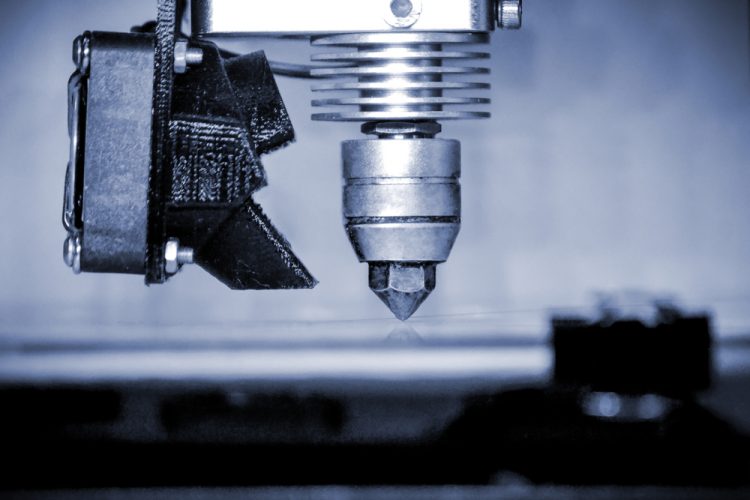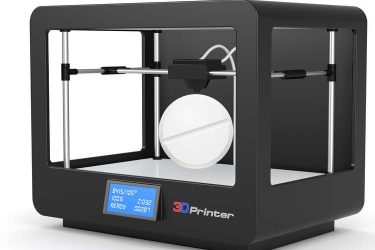3D printing – current pharmaceutical applications and future directions
Posted: 14 September 2021 | Hannah Balfour (European Pharmaceutical Review) | No comments yet
3D printing has the potential to revolutionise the pharmaceutical manufacturing industry; however, few 3D-printed products have been approved since the first in 2015. In this article, EPR’s Hannah Balfour explores the technologies currently being evaluated for use in the 3D printing of pharmaceuticals, and the work of key market players to develop and advance their applications from research to commercial.


The healthcare needs of the population, and the therapeutics we use to treat them, are changing. Though generics are undeniably important, there is a noticeable shift towards personalisation and customisation of treatment – stimulated by the adoption and enhancement of omics technologies in healthcare. This, in turn, is affecting the way we manufacture drugs: drawing the industry away from large-scale batch manufacturing to more continuous, non-batch and/or small-scale production efforts.
One technology that could fulfil the requirement of personalised therapies is three-dimensional (3D) printing, also known as additive manufacturing, which uses a computerised model to guide the layer-by-layer construction of a 3D shape. Its potential to disrupt the pharmaceutical industry is vast, as 3D printing technologies could enable on-demand production of products with personalised dosages, drug combinations, geometries and release characteristics, not afforded by existing conventional manufacturing technologies like tableting and encapsulation.1
The first 3D-printed pharmaceutical – Spritam® (a levetiracetam tablet) – was approved by the US Food and Drug Administration (FDA) in July 2015,2 and since then articles describing the 3D printing of pharmaceuticals have increased year on year.3 Valued at $175.19 million in 2020 and anticipated to grow to $285.17 million by 2025,4 the 3D-printed pharmaceuticals market represents a significant opportunity to those able to capitalise on its benefits and overcome its challenges.
Here, I explore the technologies currently used for additive manufacturing of therapeutics, some of the challenges facing the sector and key developments that could inform the future of 3D-printed pharmaceuticals.
Technologies applied in the 3D printing of pharmaceuticals
There are currently several examples of 3D-printed healthcare products on the market, ranging from ibuprofen hydrogels and drug delivery devices for progesterone and pseudoephedrine, to polypills such as guaifenesin and the multi-active combination of nifedipine, captopril and glipizide.5
To create these products, five core techniques are currently applied: extrusion moulding printing (EMP), drop on powder (DOP) printing, selective laser sintering (SLS), stereolithography (SLA) and electrohydrodynamic 3D printing (EHD).6


Machine performing selective laser sintering, a type of 3D printing.
EMP is one of the most frequently used – sub-divided into fused deposition modelling (FDM) and semisolid extrusion moulding technology (SSE). In FDM, drug-loaded polymers are heated to a semifluid state, extruded from a printing nozzle and allowed to solidify on the printing platform, creating the desired product. Despite being a relatively cheap and operationally simple process, it is limited by the potential for active pharmaceutical ingredients (APIs) to thermally degrade during the heating process and exacerbated by low drug loading.6 SSE, conversely, uses pressure to extrude a paste through a syringe-based print head to deposit material on the printing platform. This is the method used to produce guaifenesin, a bi-layered polypill with controlled release. While SSE avoids the thermal degradation problem, its limitations include the necessity for organic solvents and complex requirements for preparing the paste, as well as the need for heavy machinery.6
DOP printing, or binder jetting,1 uses droplets of a binding agent from a print head to bind powder deposited on the build platform in layers into the desired product. It is relatively low cost, easy to scale up and creates tablets with high porosity, but is limited by the need for post-processing – wherein residual solvent must be eliminated and unprocessed powder recovered – low resolution and high fragility.6
A type of powder bed fusion called SLS is another powder-based processing 3D printing technique; however, it uses a CO2 laser to selectively sinter (heat to create solid material) selected regions of layers of powders. While its precision enables manufacturers to greatly control the microstructures of the drug products produced, SLS is low speed and has the potential to degrade drug products through the heat produced by the laser.6
3D printing has the potential to revolutionise the production of pharmaceutical products, allowing for decentralised and customised manufacturing of therapeutics”
SLA, a type of vat photopolymerisation,1 uses ultraviolet lasers to polymerise photosensitive resins in layers, repeating until the desired dosage form is created. It has the best resolution of the technologies, facilitating precise structures, and is typically used to produce oral solid dosages, hydrogels and microneedle patches for drug delivery. While it has low requirements for which chemical structures or drug/excipient properties can be used, it requires post-processing to eliminate resin toxicity, the equipment is costly, there are few approved resins for the pharmaceutical field, and efficiency is low.6
EHD is an emerging technology which utilises digitally controlled deposition of materials to pattern fibrous materials, creating drug products. It enables fibre engineering on the micro-to-nano scale, allowing customised geometries and well-ordered complex structures to be formed. Researchers believe it could one day engender the small-scale manufacturing of medicines tailored to individual patient needs, such as personalised dosage form requirements or API release.6 EHD is a one-step process for which there are a wide range of applicable materials; however, its limits include low efficiency, the potential for remaining solvent in the dosage forms and high requirements for solution properties.6
Challenges facing printed pharmaceuticals
Despite the potential of 3D-printed technologies to advance the pharmaceutical industry, the complications impacting application are four-fold: the requirements for excipients, the development of printing software and instrumentation, optimising the mechanical properties of products and the regulatory landscape.
Generally, excipients for use in pharmaceutical 3D printing are relatively limited, compared to traditional manufacturing processes, especially for specialised dosage forms and technologies that use heat. To promote its application by pharma, further investigation into non-toxic, biodegradable, biocompatible and stable excipients is required.6


As the complexity of the structure of a dosage form increases, the modelling and slicing software used to design and inform its production must be continuously updated. The mechanical equipment, operating procedures and control system must also be updated and optimised to meet the needs of the various processes, whether to prevent clogging or promote product uniformity.6 At present, 3D printers used in pharmaceutical formulation preparation do not meet good manufacturing practice (GMP) standard and thus need to be validated to ensure they meet the required safety standards.
The mechanical properties of the dosage forms are a quality control parameter – that ensures the products are reproducible and suitable for post-processing. There are various factors that can influence product properties with 3D manufacturing, from nozzle fineness and adhesive viscosity to drying methods and temperature. To ensure the mechanical properties are suitable, the equipment and control programmes must be enhanced, adhesive nozzles refined and printing process parameters optimised.6
In terms of regulation, there are many questions surrounding how 3D-printed pharmaceuticals can be monitored and evaluated for quality. The FDA issued its final guidance on technical considerations for the regulation of 3D-printed medical devices in 2017;7 however, they may not apply to all 3D-printed medical devices as a separate assessment of safety and effectiveness may be required, especially for personalised products. In instances where products are customised to the patient, the question of whether 3D printing is classed as a manufacturing process or compounding, would also impact regulatory guidance. Additionally, though the FDA authorised the first 3D-printed tablets, no regulations or guidelines regarding 3D-printed medicines are currently available. There remain several regulatory challenges, such as how the performance of 3D-printed pharmaceuticals should be measured or their quality controlled, though the FDA’s Office of Testing and Research is currently working to answer them.8
A developing sector
Merck is one of the major players in the pharmaceutical 3D printing sphere, with work undergoing at its Innovation Center to test various technologies, including powder jetting, material extrusion and SLS. In a presentation at PHARMAP 2021, I listened as Dr Christoph Huels, Founder Additive Manufacturing of Tablets at Merck, explained that they are primarily focused on SLS, having found that it creates oral solid dosage forms with desirable mass, hardness, roughness and shape, as well as tablets with uniform API content and comparable dissolution to traditional manufacturing.9
Merck’s current goal, according to Huels, is to establish 3D printing for clinical trial supply. It plans to offer the technology to customers for exploratory studies in the course of the next year while working to develop a GMP solution for market introduction in two or three years’ time. He explained that he anticipates it will be 10-15 years before additive manufacturing is fully developed for broad application in the production of pharmaceuticals, though added that experts do not believe the scale up from the thousands of tablets required for clinical trial phases to commercial scale should be too challenging.9


In a recent interview with 3D Printing Industry,10 Huels stated: “Commercial manufacturing requires so-called ‘blockbuster drugs’ and billions of tablets per year for global supply. 3D printing technologies are not able to secure the supply with the current throughput today. Significant improvements need to be done to reach that in the longer-term future. Nevertheless, the current throughput is already, or will be soon, well suited to supply orphan or smaller oncology indications, where only millions of tablets are required per year.” He added that smaller indications are where 3D printing will likely have the most commercial viability, especially in the short term.
Other companies working on the 3D printing of pharmaceuticals include Aprecia, the developer of Spritam – the first 3D-printed drug ever to be approved, and FabRx. Aprecia’s Kirk Donaldson, Vice President Business Development & Alliance Management, recently stated that the company is working to develop new 3D printing formulation platforms, aside from its existing ZipDose and ZipCup binder jetting technologies; the first he said is already clinic and commercial ready.10 Donaldson added that they have several 3D-printed pipeline candidates that will advance to clinic in the next few years.
FabRx launched what it claims is the first GMP-ready 3D printer for pharmaceuticals in 2020,11 the M3DIMAKER, which is currently available for research purposes. “The M3DIMAKER is already taking part in national and international collaborations, which will involve future clinical trials, and we are in communication with the MHRA to aid regulation development for this state-of-the-art technology,” stated the company’s Co-Founder and Director, Alvaro Goyanes. “It combines multiple 3D printing technologies into one machine, allowing for flexible use and increased personalisation potential.”10
Overall, 3D printing has the potential to revolutionise the production of pharmaceutical products, allowing for decentralised and customised manufacturing of therapeutics. However, we will have to wait and see whether the challenges facing the market can be overcome to allow the technology to reach its full therapeutic potential.
References
- Seoane-Viaño I, Trenfield S, Basit A, Goyanes A. Translating 3D printed pharmaceuticals: From hype to real-world clinical applications. Advanced Drug Delivery Reviews. 2021;174:553-575.
- Szczerba R. FDA Approves First 3-D Printed Drug [Internet]. Forbes. 2021 [cited 1 September 2021]. Available from: https://www.forbes.com/sites/robertszczerba/2015/…
- Gioumouxouzis C, Karavasili C, Fatouros D. Recent advances in pharmaceutical dosage forms and devices using additive manufacturing technologies. Drug Discovery Today. 2019;24(2):636-643.
- 3D Printed Drugs Market Research Report by Technology, by Region – Global Forecast to 2025 – Cumulative Impact of COVID-19 [Internet]. Researchandmarkets.com. 2021 [cited 1 September 2021]. Available from: https://www.researchandmarkets.com/reports/4857884/…
- Overview of Pharmaceutical 3D printing | Pharma Excipients [Internet]. Pharma Excipients. 2021 [cited 1 September 2021]. Available from: https://www.pharmaexcipients.com/pharmaceutical-3dp-overview/
- Cui M, Pan H, Su Y, et al. Opportunities and challenges of three-dimensional printing technology in pharmaceutical formulation development. Acta Pharmaceutica Sinica B. 2021;11(8):2488-2504.
- Technical Considerations for Additive Manufactured Medical Devices [Internet]. U.S. Food and Drug Administration. 2017 [cited 1 September 2021]. Available from: https://www.fda.gov/regulatory-information/search-fda-guidance-documents/…
- Zidan A. Promise and Potential of 3D Printed Pharmaceuticals [Internet]. U.S. Food and Drug Administration. 2017 [cited 1 September 2021]. Available from: https://www.fda.gov/drugs/news-events-human-drugs/cder-researchers-explore-promise-and-potential-3d-printed-pharmaceuticals
- Huels C. 3D printing or Additive Manufacturing of Tablets. Presentation presented at PHARMAP 2021 2021; Virtual.
- Everett H. Merck, Aprecia, and FabRx on transitioning 3D printed pharmaceuticals from lab to clinic – 3D Printing Industry [Internet]. 3D Printing Industry. 2021 [cited 1 September 2021]. Available from: https://3dprintingindustry.com/news/merck-aprecia-and-fabrx…
- FabRx’s pharmaceutical 3D printer for personalised medicines, M3DIMAKER™, is now available! – FabRx [Internet]. FabRx. 2020 [cited 1 September 2021]. Available from: https://www.fabrx.co.uk/2020/04/06/fabrxs-pharmaceutical-3d-printer-for-personalised-medicines…
Related topics
3D printing, Active Pharmaceutical Ingredient (API), Big Pharma, Drug Development, Drug Manufacturing, Formulation, Regulation & Legislation, Research & Development (R&D), Technology, Therapeutics
Related organisations
Aprecia, FabRx, Merck, US Food and Drug Administration (FDA)









